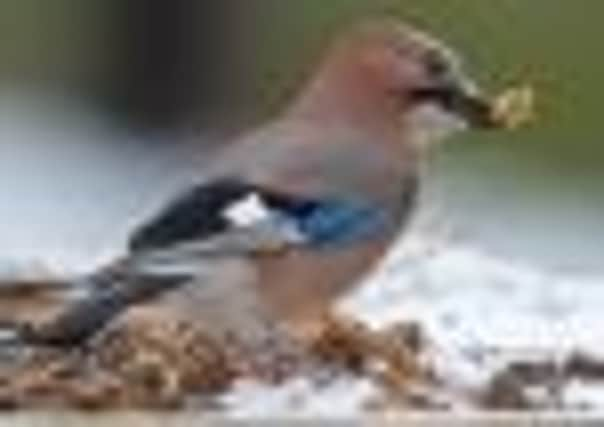Outdoors: Jay bird - a sight for sore ears


But as the renowned ornithologist Thomas Coward pointed out, rather than being in a perpetual state of strangled torment, these raucous calls are usually an indication of happy birds, and in jay-speak probably sound like sweet music.
In his book The Birds of the British Isles, first published in 1920, he wrote: “After the young have left the nest the family parties scour the woods, following one another with noisy screams, which, though really calls or notes of affection, have an angry almost distressful ring; the happy birds sound as if in torture.”
Advertisement
Hide AdJohn Clare, the 19th-century English poet, mistook the call of the jay for that of the nuthatch, but none the less his poem encapsulates well the harshness of the call: In summer showers a skreeking noise is heard, Deep in the woods of some uncommon bird, It makes a loud and long continued noise, And often stops the speed of men and boys.
The fact that Clare misidentified the bird is perhaps a reflection of its incredible shyness. It is always hard to get a good view of a jay because it likes to lurk in thick tree canopy and will take flight at the first sight of a person. A fleeing jay, however, is usually relatively easy to identify because of its characteristic floppy flight combined with distinctive white rump that can easily be seen in good light.
I could probably count on the fingers of one hand the number of times I’ve had a really decent view of a jay, such is its elusiveness. This is a pity for the plumage is truly astounding, more akin to some tropical beauty than a bird that frequents Scottish woodlands, with the range and depth of colour almost defying the fact that jays are members of the crow family.
The body is a lovely soft pink with the wings sporting azure flashes that are similar to the striking electric-blue of a kingfisher. The streaked feathers on top of the head are often ruffled in a raffish manner.
Jays are most typically found in broadleaved woodland, although they also occur in conifer plantations, especially around the fringes, where they often like to nest.
I find the presence of jays is most obvious during autumn, when small groups noisily forage far and wide through our woodlands for acorns, beech mast and hazelnuts. The wood behind my house can often be incredibly noisy at that time of the year, with jays being heard several times during the day. They are less noticeable for the rest of the year, and while there may still be a handful of birds in my wood, their skulking and quieter behaviour makes them harder to detect.
Advertisement
Hide AdJays are great hoarders and will bury nuts and seeds over considerable distances. It is thought that the jay takes careful note of obvious landmarks such as bushes and boulders where each acorn is stored so that it can be found at a later date. However, the sheer number of seeds involved means that a reasonable proportion will never be retrieved and it is likely that the bird plays an important role in the spread of oak and other trees to new areas.
Jays also eat a wide range of invertebrates including caterpillars and large black slugs. One bird that was killed last April was found to have at least 127 click-beetles in its stomach.
Advertisement
Hide AdTheir propensity to take birds’ eggs and nestlings in spring has meant that for the last couple of centuries jays have been persecuted so as to protect game birds.
But such controls have significantly decreased in recent decades and the jay population is now on the increase throughout Scotland, with the bird colonising new areas in a process that has also been aided by afforestation. It would seem that the beauty with the hideous voice is set to become an increasingly familiar feature of our woodlands in the years to come.